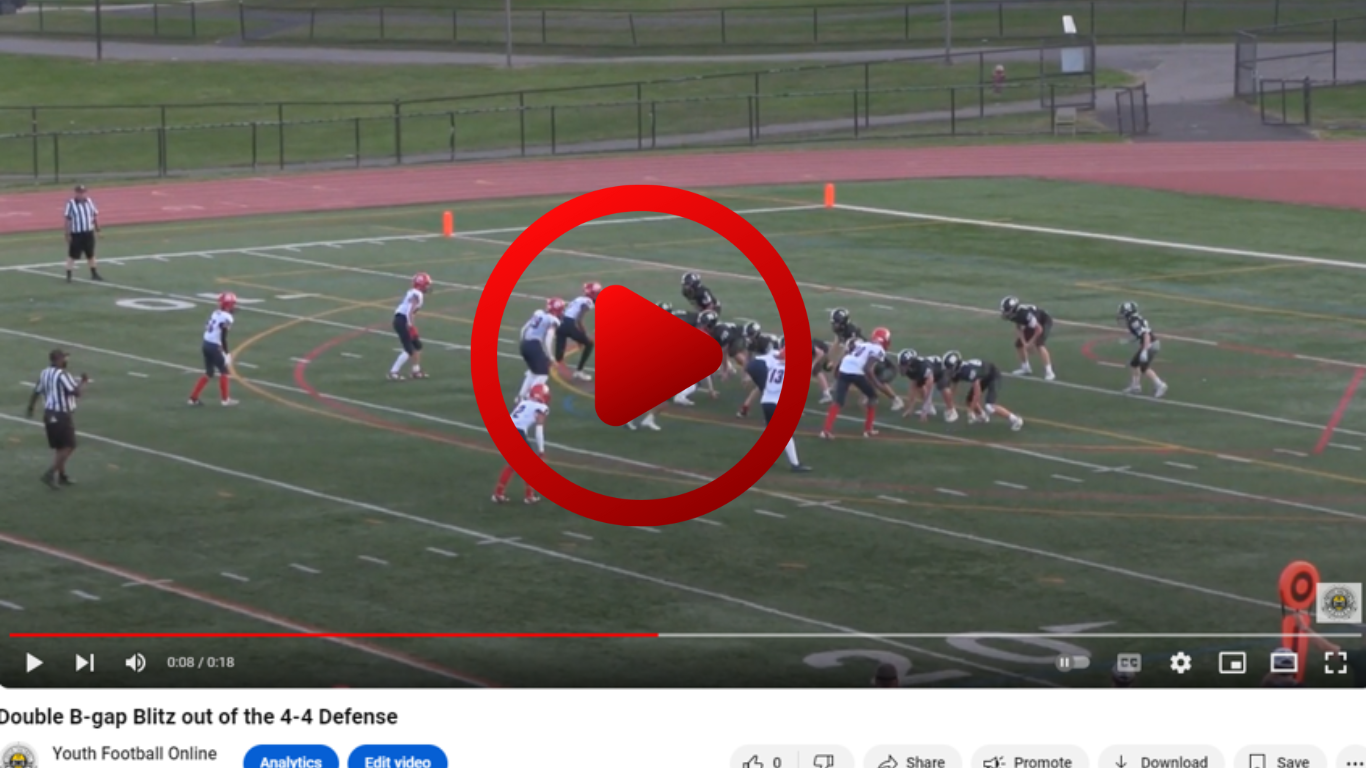How to Score More Points in Youth Football

Whether you have a team full of great athletes or a team that struggles, if you utilize these tactics you will be able to move the football and score more points. Here’s how to score more points in youth football- regardless of your teams skill level.
How to Score More Points in Youth Football – 5 Underrated & Underutilized Tactics
1. Utilize Gap Schemes
What are gap schemes? To put it simply, gap schemes have the offensive linemen on the play-side block down or away from the gap where the runner is going. There will usually be a kick-out block on the edge defender. Gap schemes will allow your offensive linemen to use leverage, which will give your offensive linemen great blocking angles on the defenders. Keep this in mind- defensive linemen are taught to have their heads turned in and their eyes watching the football- so they will not see these down blocks coming. Gaps schemes will give your offense the best chance of actually getting defensive linemen moved. If you teach your offensive linemen the proper techniques for down blocking you will get most of these defensive linemen washed down.
In youth football so many defensive linemen are taught to penetrate and/or to shoot gaps. Gap schemes will allow you to cut off that penetration and use their momentum to block them down and right out of the play. Gap schemes provide your players with simple blocking rules that will allow them to pick up any post-snap movements from the defensive line (stunts / slants). Most coaches just tell their players to ‘block the kid in front of them” (base block). In my opinion, it’s very difficult to base block a defender and get him moved.
Benefits
- Provides your o-linemen with favorable blocking angles.
- Simple rules- your are responsible for your inside gap (Gap-Down-Linebacker).
- The down blocks with the kick-out will create huge running lanes even if you are undersized!
Gap Schemes
Power
Power utilizes down blocks at the point of attack. The end man on the line of scrimmage is going to be kicked out. Double teams can also be utilized on the play-side DT. Down blocking is a much better technique against bigger, more powerful defensive linemen.
Counter Belly
The Counter play is a great gap scheme play because it utilizes down blocks and a kick-out at the point of attack. So many youth defenders get caught looking at backfield action which will allow your offensive linemen to just block down and get them washed.
See Also: Gap vs. Zone Blocking Schemes
2. Utilize Unbalanced Formations
In my opinion, unbalanced formations are the most underrated and under-utilized tactics in youth football. Going with an unbalanced formation you will create an extra gap the defense has to account for. Most of the time the defense won’t recognize the unbalanced and you will have an open gap you can attack. We utilize a lot of unbalanced formations and I will say that typically defenses will either not adjust to the unbalance or they will over-shift to the unbalanced. Unbalanced formations not only create extra gaps and alignment conflict for the defense, they also provide you with an extra blocker to the unbalanced side.
For me, there are two types of unbalanced formations- unbalanced lines (players on the line of scrimmage) and unbalanced backfields (backfield players loaded up to one side). Unbalanced backfields create more of an issue for the defense because it not only creates an extra gap that the defense has to account for, it also makes the defense have to account for an extra pass threat. Personally, I like going with a 3-man surface (G, T, TE) with a WB to that side as well- so really it’s a 4-man surface.
Coaching Tip: When you go unbalanced get the ball snapped on a fast snap count so that you don’t give the defense time to recognize and adjust to your unbalanced formation.
ISO- Unbalanced Line
Here’s a look at our unbalanced (tackle-over) I-Formation ISO play. “Tackle-Over Right” will tell our left tackle that he is lining up to the right. You can see the extra gap this creates for the defense. When you run ISO you want to run it at the gaps in the defense- here we run the ISO at the gap between the DT and DE (gap created because of unbalanced line).
Beast Formation (unbalanced backfield)
Benefits
- Outnumber the defense at the point of attack.
- Outflank the defense.
- Create an extra gap for the defense to account for.
See Also: Outnumber and Outflank the Defense with the Tank Formation
3. Create a Series Based Attack
The biggest mistake youth football coaches make is that they just run a bunch of plays, rather than a system/ series based attack. A series based attack is a group of plays that all complement each other. For example, our Jet Sweep Series is a series of plays that all work off of Jet Sweep. The series is built around the Jet Sweep play and all the companion plays work off of the jet motion action. Creating a series based attack will allow you to set up other plays and it will allow you to attack all areas of the field. In a true series based scheme the defense can commit to stopping one play, but they will leave themselves vulnerable to a counter or complement play. For example, when teams sell out to defend our Jet Sweep we will then run Jet Power, Counter, or Post-wheel and completely gut them.
Benefits
- Series based systems give you a structured attack. All plays complement each other.
- Allows you to be efficient with your play calling- you’ll have answers for whatever the defense wants to do.
- Gives your team an identity and a true system to build around.
See Also: Free Youth Football Systems (series based)
Download: Youth Football Playbooks
4. No Huddle
Going No Huddle is something many youth football teams will refuse to do- which I just don’t get. As coaches, it’s our job to call a play that gives our players the best chance for success. Going with the no huddle will allow you to do just that. Think about it, say you call a sweep play to the right. The kids break the huddle and then you see the defense is aligned to completely stop the play- then what? You run the play into a wall of defenders, wasting a down!?!? If you have the ability to change the play at anytime you will be a much more efficient play caller. For us, no huddle isn’t so much about playing fast, it’s about getting our players a play that gives them the best chance for success. Below is a video that dives deep into my no huddle play calling system (free clinic). It’s well worth the watch- I promise.
&
Benefits
- Efficient play calling vs. the defense you facing.
- Stresses the defense- forces them to play at your pace.
- Ability to change the play at any time.
Be Great at What You Do
It doesn’t matter what you run on the youth football level. There are a lot of great offenses /schemes that work on the youth level. What is important is that you are good at what you do decide to run. You’ll score more points when you have a small number of plays that you can execute perfectly, rather than a bunch of plays you don’t execute well. There’s an old saying- quality over quantity and that applies here! You need to be running a system that all your coaches believe in and can teach. When it comes to installing an offense it’s important that all your coaches understand the scheme and they are able to coach it up. Also, keep in mind that running the same plays out of multiple formations allows you to be multiple while keeping things simple for your players. You can always make your system better and more diverse by adding tags (adjustments) to the plays you already have installed.
Benefits
- Quality over quantity!
- You will be able to better communicate / teach the offense to your players when you are comfortable with it.
- Gives your team an identity and allows you to be multiple while keeping things simple.













